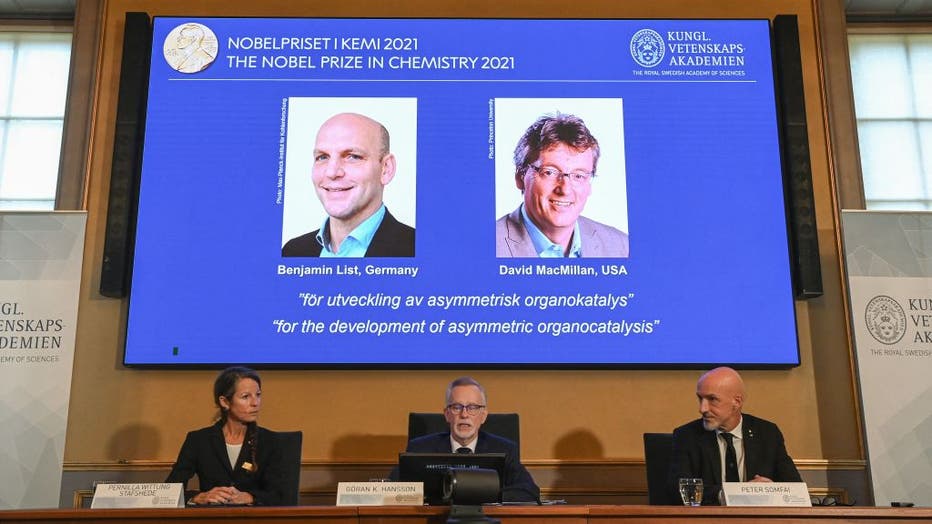Nobel Prize in chemistry awarded to scientists for new way to build molecules
STOCKHOLM - Two scientists won the Nobel Prize for chemistry Wednesday for finding an "ingenious" new way to build molecules that can be used to make everything from medicines to food flavorings.
Benjamin List of Germany and Scotland-born David W.C. MacMillan developed "asymmetric organocatalysis" — work that has already had a significant impact on pharmaceutical research, said Goran Hansson, secretary-general of the Royal Swedish Academy of Sciences. The tool has also made chemistry "greener," the judges said.
"It’s already benefiting humankind greatly," said Pernilla Wittung-Stafshede, a member of the Nobel panel.
Making molecules — which requires linking individual atoms together in specific arrangement — is a difficult and slow task. Until beginning of the millennium, chemists had only two methods — or catalysts — to speed up the process.
"But in the year 2000, everything changed," said Wittung-Stafshede.
List, of the Max Planck Institute, and MacMillan, of Princeton University, independently reported that small organic molecules can be used to do the same job as big enzymes and metal catalysts in reactions that "are precise, cheap, fast and environmentally friendly," she said. "This new toolbox is used widely today, for example, in drug discovery and in fine chemicals production."

(Bottom L-R) Member of the Nobel Committee for Chemistry Pernilla Wittung Stafshede, Goran K Hansson, Secretary General of the Royal Swedish Academy of Sciences and member of the Nobel Committee for Chemistry Peter Somfai address a press conference t
Johan Åqvist, chair of the Nobel Committee for Chemistry, said: "This concept for catalysis is as simple as it is ingenious, and the fact is that many people have wondered why we didn’t think of it earlier."
Speaking after the announcement, List said the award was a "huge surprise."
"I absolutely didn’t expect this," the 53-year-old said, adding that he was on vacation in Amsterdam when the call from Sweden came in.
List said he did not initially know that MacMillan was working on the same subject and figured his hunch might just be a "stupid idea" — until it worked.
"I did feel that this could be something big," he said.
It is common for several scientists who work in related fields to share the prize. Last year, the chemistry prize went to Emmanuelle Charpentier of France and Jennifer A. Doudna of the United States for developing a gene-editing tool that has revolutionized science by providing a way to alter DNA.
RELATED: Nobel Prize awarded to US scientists for discovery of temperature, touch receptors
The prestigious award comes with a gold medal and 10 million Swedish kronor (over $1.14 million). The prize money comes from a bequest left by the prize’s creator, Swedish inventor Alfred Nobel, who died in 1895.
On Monday, the Nobel Committee awarded the prize in physiology or medicine to Americans David Julius and Ardem Patapoutian for their discoveries into how the human body perceives temperature and touch.
The Nobel Prize in physics was awarded Tuesday to three scientists whose work found order in seeming disorder, helping to explain and predict complex forces of nature, including expanding our understanding of climate change.
Over the coming days prizes will also be awarded for outstanding work in the fields of literature, peace and economics.

